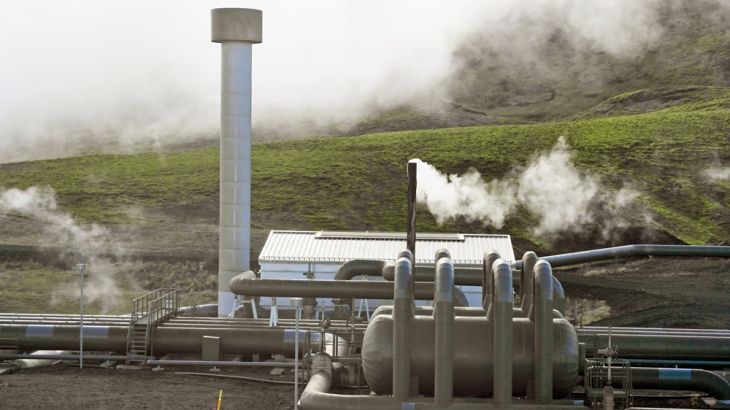
The science of capturing carbon
Scientists are fighting to curtail the dangerous effects of climate change by capturing carbon dioxide.
The devastating effects of climate change are everywhere.
The number of record high-temperature events in the United States, and worldwide, has been on the rise. And the increase in hurricanes across the US has been linked to a rise in ocean temperatures.
Keep reading
list of 4 itemsAre seed-sowing drones the answer to global deforestation?
Rainfall set to help crews battling wildfire near Canada’s Fort McMurray
How India is racing against time to save the endangered red panda
According to NASA, the planet’s average surface temperature has risen by an average of 1.1 degrees Celsius per year since the late 19th century, with most of the warming occurring since 2011; 2016 currently holds the title of hottest year on record.
What is needed is a price on carbon. There has to be an incentive on the industry to do it. And it should be included in the price of fossil fuel. The price of capturing and storing carbon.
Scientists at NASA have also collected evidence which indicates increased levels of CO2 in the earth’s atmosphere are behind these rising temperatures and therefore indirectly responsible for the extreme droughts, storms and unusual weather events the world is witnessing more frequently.
Now, the fight to save the planet is taking an innovative turn.
While nature provides a path for carbon capture through photosynthesis – the process used by plants to transform light energy into chemical energy – the increase in CO2 output has far outpaced the growth of the world’s forests.
So, what if scientists could offset dangerous greenhouse gas levels by manually capturing CO2 from the atmosphere and then putting it to use in a cyclical, no-waste method?
One such project, run by a team of researchers in Iceland taking their cue from processes in nature, seeks to combine basalt and CO2. Basalt is naturally highly reactive with CO2; when the two meet, they undergo a series of exchanges that culminate with the carbon precipitating out as a solid whitish substance, similar to limestone.
“In our volcanic areas, we have volcanic CO2 interacting with our basalt, turning the CO2 into carbonate minerals. So then we thought why not test this interesting idea out here in Iceland. We have our geothermal power plant, providing a source of CO2 that then can be captured and injected back into the ground, and see if we can utilise and accelerate this natural process,” says Edda Aradottir of Reykjavik Energy, home to carbon capture programme CarbFix.
“Once the CO2 is turned into stone, you don’t have to worry about it, it’s not going anywhere it’s just buried in the ground as rock,” she continues.
The second project uses cyanobacteria – an ancient organism with properties that can turn carbon dioxide into practical organic compounds – to convert CO2 into green, biodegradable products such as fuels, bioplastics, oils and flavourings.
Researchers argue that this method is widely available, for more effective coverage, and the cyanobacteria can be easily manipulated to perform the task.
“Although there are differences in climate between various places on earth, we find many different cyanobacteria. In principle, any spot where you’d want to apply your technique, you could find a cyanobacterium that is optimally adapted to carry out the process that you’ve designed,” says Dr Klaas Hellingwerf, a microbiology professor at the University of Amsterdam, spearheading cyanobacteria research.
Whether either of these solutions is made internationally widespread is yet to be seen, but the clear consensus is that something must be done.
“[In] the last 200 years, mankind has learned it is very cheap and effective to burn fossil reserves,” says Hellingwerf. “However, if we continue to do that that will create this problem of increased CO2 and global warming and that’s why it’s very important to change the carbon cycle into a cycle where all the carbon that is fixed by photosynthesis – either plants for food or this cyanobacteria to make materials – is used and after use is ideally reused. then, once it’s CO2, it can enter the cycle anew and with the energy of sunlight new products can be made.”